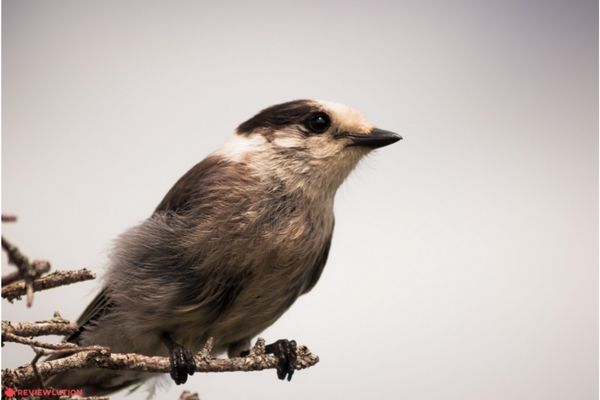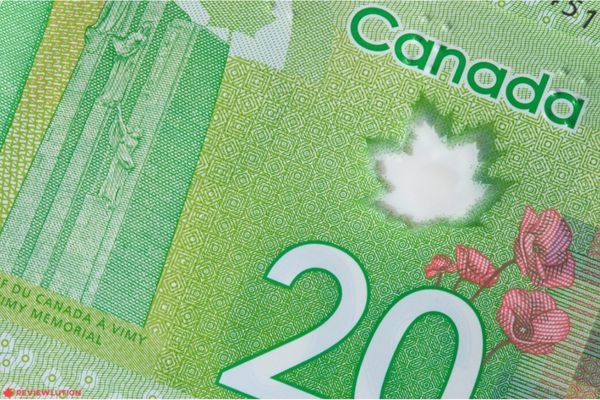What Are the National Symbols of Canada?
Given the rich cultural heritage of Canada, it’s no surprise that the country has a number of official symbols. They represent different aspects of Canadian life and reflect the nation’s past, traditions and values. As such, they’re a vital part of what it means to be Canadian.
If you’re interested in learning more about the official symbols of Canada, read on for a brief overview of each one.
What are Canada’s Official Symbols?
The historical and national symbols reflect the country’s diverse population, landscape, and values. Each one bears unique significance and meaning, making them an important part of Canadian identity.
The Beaver
The beaver is a large, brown rodent that is native to North America. It’s known as the national animal of Canada and is a popular figure in Canadian folklore. The beaver is also featured on the country’s 5-cent coin, cementing its place in the cultural landscape.
The beaver is part of the national symbols of Canada because of its important role in the nation’s history. The fur trade was a major industry during the late 1600s and early 1700s, and beaver pelts were highly sought-after.
In fact, the beaver was so important to the Canadian economy that it was even featured on the country’s first postage stamp, marking its official status as a national symbol.
The Coat of Arms
This symbol features a shield with symbols of the four founding nations: England, France, Scotland, and Ireland. The crest above the shield is a lion holding a Canadian maple leaf, while the supporters on either side are a unicorn and a lion. There are also various flowers and plants included in the design, such as the rose, thistle, shamrock, and fleur-de-lis.
The Canadian coat of arms is a symbol of unity, as it represents the country’s diverse population and history. It’s also a reminder of the nation’s status as a constitutional monarchy, with the lion representing the Queen and the unicorn representing Canada itself.
Inscribed at the bottom is the motto of Canada: A Mari Usque ad Mare, which means “From Sea to Sea” in Latin. This phrase reflects the vastness of the country and its many coastal regions.
The design can be found on various government documents and buildings, as well as on national identity documents in Canada. This makes it one of the most recognizable symbols of the country.
The Maple Leaf Tartan
The Maple Leaf Tartan was created by Scottish weaver David Weiser in 1964 and it was declared a national symbol in 2011. It’s a pattern that consists of red, green, brown and gold stripes, each one intertwining with the other.
The design is inspired by the changing colours of the maple leaf throughout the year – green for summer, gold for autumn, red for the first frost and brown for the first fallen leaves before winter. This Canadian leaf plays a significant role in the country’s history, culture and identity.
The tartan is normally used by The Royal Canadian Regiment Pipes and Drums, which is the Canadian Armed Forces’ official musical ensemble. It can also be found on the uniforms of the 2nd, 3rd and 4th battalions of the Royal Canadian Regiment.
The Maple Tree
Despite its close association with Canada, the maple tree wasn’t regarded as an arboreal emblem until 1996. There are several species of maple tree found across the country, with the most common being the sugar maple (Acer saccharum).
This particular type of tree was selected as the national emblem because of its importance to the Canadian economy and ecology. The sugar maple is a source of food, shelter and shade for many animals, and it also produces sap that can be turned into syrup. This sweet liquid is a popular ingredient in many Canadian dishes, such as pancakes, waffles and ice cream.
The maple leaf also appears on the national flag of Canada, further solidifying its status as a symbol of the country.
National Anthem
The Canadian national anthem is a patriotic song that celebrates the country’s natural beauty, history and people. It’s a symbol of national pride and unity, and it’s often performed at public events, such as sporting matches and political rallies.
The song, titled “O Canada”, was composed by Calixa Lavallée with lyrics by Sir Adolphe-Basile Routhier, and it was first performed in 1880. The song was officially proclaimed as the national anthem of Canada in 1967.
There have been several different versions of the anthem over the years, each one reflecting the changing values and demographics of the country. The most recent version includes both English and French lyrics.
National Flag
The Canadian flag is an image of a red maple leaf on a white background, with a red bar on each side. The colours of the flag are symbolic of the natural landscape, with the white representing snow and ice, and the red symbolizing the country’s maple trees. Its proportions are 2:1, with the width being twice the height, resulting in a rectangular shape.
The design was created by Jacques Vachon and George Beers, and it was first raised on February 15, 1965. This date is now celebrated as National Flag of Canada Day to honour its significance.
The general understanding regarding flag etiquette is that it should be treated with respect, as a sign of national pride. It shouldn’t be allowed to touch the ground, and it should be raised and lowered in a ceremonial manner.
National Horse
The Canadian Horse is a particular breed whose roots can be traced back to the early 17th century. These horses were brought to the country by European settlers, and they quickly became an important part of Canadian culture and history.
The horse is known for its strength, endurance and hardiness, which made it an essential tool in the development of civilization. It was used for transportation, agriculture and even military purposes.
Today, this horse is considered to be a national treasure, and it plays an important role in our cultural heritage. The animal can be found in many parts of the country, and it’s often used for riding and working on farms.
National Sports
Known as the “Great White North”, Canada is a country with a long and proud history of winter sports. Hockey has distinguished itself as the national sport, seeing as it’s a popular pastime among Canadians of all ages.
The national game of Canada is a fast-paced sport that’s played on an ice rink, with two teams of skaters trying to score goals by shooting a small rubber puck into the opposing team’s net. The sport rose to national symbolism in 1994 when Parliament passed the National Sports of Canada Act.
National Colours
Red and white became Canada’s official colours in 1921 when King George V proclaimed the Coat of Arms. But the origin of these colours can be traced back to the 11th century during the First Crusade.
At that time, the Norman lord Bohemond I led a group of knights who wore red crosses on their white tunics. This distinguishing feature helped the Crusaders identify each other on the battlefield, and it eventually led to the development of the Canadian flag.
The colour red symbolizes strength and courage, while white represents peace and purity. These colours are often seen at public events, such as national holidays and sporting matches.
Other Distinctive Canadian Symbols and Landmarks
Apart from the official symbols, there are a number of other symbols and landmarks that make Canada unique.
Canada’s National Park
The Canadian National Park map is full of a variety of landscapes including mountains, forests, lakes and rivers. There are many different types of ecosystems represented, making it one of the most biodiverse countries in the world.
The park system is also home to some iconic Canadian animals such as the beaver, moose and grizzly bear. In total, there are 48 national parks spread across the country. They all offer different activities and attractions, making them popular tourist destinations for avid nature lovers.
National Soccer Team
The Canadian national soccer team represents the country in international competitions. The team is controlled by the Canadian Soccer Association, and it competes in both the CONCACAF region and FIFA World Cup.
The team has had some success over the years, winning the CONCACAF Championship in 1985 and 2000. They’ve also qualified for two FIFA World Cups, with the 2022 entry being their second one in 36 years.
Meanwhile, the Canadian women’s national soccer team is ranked 6th in the world, as of March 2022. Their most prominent international achievement was winning the gold medal at the 2020 Olympics in Tokyo. This team is a also two-time CONCACAF Women’s Championship winner.
National Basketball Team
The national basketball team operates under the auspices of Basketball Canada. They’ve been competing in international competitions since 1935, and they’ve had some success over the years.
The Canadian men’s national basketball team players are commonly referred to as “The Road Warriors” due to the fact that they often play away from home. The team has qualified for nine Olympic Games, with their best result coming in 1936 when they won a bronze medal.
As for the women’s team, they’ve been competing since 1977. They’ve had reasonable success over the years, winning silver at the 1979 FIBA World Championship for Women.
National Bird
The gray jay is seen as the Canadian national bird, which is found in the boreal forests of the country. It’s a songbird that’s known for its friendly behaviour and its ability to store food in the winter. Its scientific name is Perisoreus Canadensis, and it’s also sometimes called the whisky jack or Canada jay.
In terms of appearance, the gray jay is a small bird with gray feathers and a white belly. It has a black tail and yellow eyes, and it’s about the size of a robin. Its compact body and short tail help it to maneuver easily through the trees.
The gray jay is an intelligent bird that’s known for its resourcefulness. It often builds its nest in old woodpecker holes, and it will also use man-made structures such as buildings and bridges.
National Airforce Museum
The National Airforce Museum of Canada is located in Trenton, Ontario. It’s the country’s largest and oldest military aviation museum, and it tells the story of the Royal Canadian Air Force through a series of interactive exhibits.
The museum has a wide variety of aircraft on display, including both civilian and military planes. Visitors can also learn about the history of aviation in Canada, as well as the role that the air force has played in both world wars.
The museum is open year-round, and it’s a popular tourist destination for both aviation enthusiasts and those interested in military history.
Money Symbols and Images
The Canadian dollar symbol is “$” and the code is “CAD”. The dollar is divided into 100 cents, and it’s often abbreviated as “cent” when referring to small amounts of money.
Each banknote and coin features a variety of Canadian symbols and images. For instance, the ten-dollar bill features a portrait of Viola Desmond, a Black Nova Scotian businesswoman who challenged racial segregation. The 20-dollar bill features a portrait of Queen Elizabeth II, as well as the Canadian National Vimy Memorial.
The one-dollar coin, also known as the “loonie”, features a loon on one side and the Queen on the other. The two-dollar coin, also known as the “toonie”, features a polar bear on one side and the Queen on the other.
Evidently, the portraits, symbols and images on Canada’s money tell the story of the country’s historic figures throughout the years. These are people that have had a tremendous impact on society, and their stories are worth remembering.
Finishing Thoughts
Regardless of where you set foot in the country, you’re sure to come across a number of Canadian symbols and landmarks. From the majestic mountains to the friendly animals, there’s no shortage of things that make Canada unique. As proud residents, we should take the time to learn about the history and meaning behind these symbols. They’re a part of what makes us Canadian, and they help to tell the story of our great nation.
FAQ
While the answer to this question may be entirely subjective, the Maple Leaf is widely considered to be the country’s most important symbol. It’s become synonymous with Canadian identity, and it can be seen on everything from the flag to the currency.
The Coat of Arms and the Maple Leaf Tartan are both official national symbols. The former is a symbol of the Canadian government, while the latter is a symbol of Canadian culture.
The beaver and the horse are the two national animals of Canada. The beaver is a symbol of hard work and determination, while the Canadian horse is a symbol of strength and endurance.
The maple leaf serves as the national emblem of Canada. This is because the maple tree is found in every province and territory, and it’s come to represent the country as a whole.
The Canadian flag was designed by George Stanley, who was inspired by the flag of the United Kingdom. The flag was first flown on February 15, 1965, and it has since become one of the most important national symbols of Canada.



















